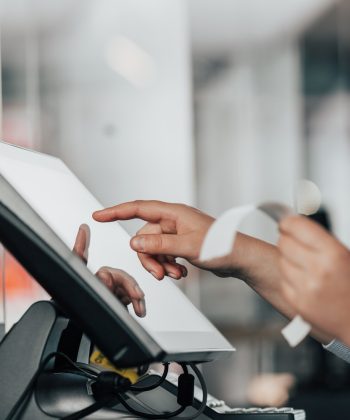Chargebacks pose significant financial challenges to the restaurant industry. These disputes, initiated by customers to reverse transactions, can lead to substantial revenue losses, increased administrative costs, and strained customer relationships.
Understanding the causes and executing successful prevention and management strategies is crucial for restaurants to safeguard their profits and maintain customer satisfaction. This article explores the financial impact of chargebacks, their common causes, and practical approaches to prevent and manage them effectively.
The Financial Impact of Chargebacks on Restaurants
Chargebacks can severely affect a restaurant’s financial health. Each chargeback results in the loss of the sale and incurs additional fees from payment processors, administrative costs to manage disputes, and potential fines for excessive chargebacks.
Over time, high chargeback rates can lead to higher processing fees and even the termination of merchant accounts.
According to a study by J.P. Morgan, chargebacks and fraud cost U.S. businesses billions of dollars annually. For restaurants operating on tight margins, these losses can be particularly devastating.
The Federal Trade Commission (FTC) emphasizes the importance of adhering to best practices in credit and billing to mitigate fraud and reduce chargebacks. The National Restaurant Association also highlights the significance of maintaining clear communication and detailed records to minimize the risk of chargebacks.
The financial burden of chargebacks extends beyond direct losses. Restaurants must allocate resources to dispute management, which can be time-consuming and labor-intensive.
Additionally, frequent chargebacks can damage a restaurant’s reputation with payment processors, potentially leading to higher charges or not being able to accept credit card payments. This scenario can be catastrophic for a business heavily reliant on card transactions.
Common Causes of Chargebacks in the Restaurant Industry
Understanding the common causes of chargebacks is the first step in preventing them. In the restaurant industry, chargebacks often arise from the following issues:
- Customer Dissatisfaction: Poor service, incorrect orders, and subpar food quality can lead customers to dispute charges. According to the National Restaurant Association, ensuring customer satisfaction minimizes disputes and maintains a positive reputation.
- Fraudulent Transactions: Stolen credit cards and identity theft can result in unauthorized charges being contested. The FTC highlights that restaurants are frequent targets of fraud due to the high volume of card-not-present transactions.
- Billing Errors: Mistakes such as double billing, incorrect charges, or failure to apply discounts can prompt chargebacks. The Federal Trade Commission advises businesses to have robust billing systems to minimize errors.
- Miscommunication: Lack of clear communication regarding charges, refunds, and return policies can lead to misunderstandings and disputes.
Prevention Strategies
To minimize chargebacks, restaurants can adopt several preventative measures:
- Enhance Customer Service: Providing wonderful customer service is paramount—train staff to handle complaints efficiently and resolve issues promptly to prevent disputes from escalating into chargebacks. According to a study program by International Records Management Trust, satisfied customers are less likely to initiate chargebacks.
- Improve Order Accuracy: Implement robust order management systems to ensure order-taking and fulfillment accuracy—Double-check orders before delivery to avoid mistakes. The SBA also recommends regular staff training to maintain high accuracy levels.
- Implement Fraud Detection Tools: Utilize advanced fraud detection tools to identify and prevent unauthorized transactions. Tools like EMV chip technology and CVV verification can reduce the risk of fraudulent charges. According to the FTC, maintaining compliance with credit practices can also help prevent fraud-related chargebacks.
- Clear Communication: Communicate all charges, policies, and procedures to customers. Ensure that receipts and invoices are accurate and detailed, reducing the likelihood of misunderstandings.
- Chargeback AI Dispute Management Assistant: Leverage technology such as the chargeback AI dispute management assistant to streamline dispute management. This tool can help identify patterns, and provide insights to prevent future chargebacks.
The National Restaurant Association recommends that restaurants regularly review their procedures and make necessary adjustments to avoid potential issues. They suggest conducting regular staff training sessions and updating policies to reflect best practices in customer service and transaction management.
Management Strategies
Despite preventative measures, some chargebacks are inevitable. Effective management strategies are essential to minimize their financial impact:
- Timely Response: Respond promptly to chargeback notifications. Gather all necessary documentation, such as receipts, order details, and customer communications, to support your case. The SBA emphasizes the importance of having a well-documented response process to handle disputes efficiently.
- Detailed Records: Keep detailed records of all kinds of transactions, including date, time, amount, and customer information. This documentation is crucial for disputing chargebacks successfully. According to the SBA, detailed record-keeping is a best practice for managing financial disputes effectively.
- Dispute Resolution Process: Establish a transparent dispute resolution process. Train staff to handle chargeback disputes efficiently and ensure all relevant information is readily available. The Federal Trade Commission advises businesses to create standardized dispute resolution procedures to improve response times and success rates.
- Monitor Chargeback Ratios: Regularly monitor your chargeback ratios. High ratios can lead to increased fees and penalties. Use analytics to identify trends and address underlying issues. The SBA recommends using chargeback monitoring tools to keep track of patterns and take corrective actions as needed.
- Customer Feedback: Motivate customers to provide feedback on their dining experience. Address negative feedback promptly to prevent dissatisfaction from escalating into chargebacks. The National Restaurant Association calls attention to the importance of proactive customer engagement in reducing chargeback occurrences.
Take Action to Protect Your Restaurant’s Revenue
A well-known restaurant chain faced a significant increase in chargebacks, resulting in substantial financial losses. By implementing a combination of prevention and management strategies, they reduced their chargeback rates by 30%. Key actions included:
- They enhanced customer service training to resolve issues before they led to disputes.
- I am implementing a sophisticated order management system to improve order accuracy.
- We are utilizing the chargeback AI dispute management assistant to automate dispute responses and identify common causes of chargebacks.
- We regularly review and update their billing and refund policies to ensure clarity and transparency.
These steps reduced chargebacks and improved overall customer satisfaction and loyalty.
Chargebacks present a significant financial challenge for restaurants. However, by understanding their causes and implementing effective prevention and management strategies, restaurants can protect their revenue and enhance customer satisfaction.
Leveraging technology, such as the chargeback AI dispute management assistant, and maintaining clear communication and detailed records are essential to a successful chargeback strategy. By taking proactive measures, restaurants can minimize the impact of chargebacks and focus on delivering exceptional dining experiences.
 |
Name: Camila Noble Camila Noble is an expert content writer specializing in restaurant management at Orders.co. With a passion for the culinary arts and a knack for business insights, she delivers practical tips and engaging articles for industry professionals. |

